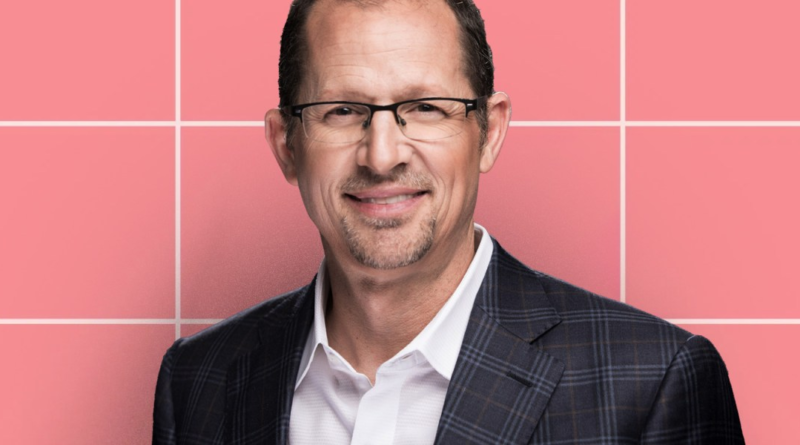Coursera’s CEO says leveraging AI in online learning is key to a more accessible, flexible education experience in 2024
For some students, online learning brings back memories of pandemic isolation. But as schools have reopened over the past few years, students haven’t all returned to preferring in-person education. In fact, online learning has remained popular. For some students, it is the key to obtaining a flexible, affordable, and accessible education.
One of the biggest players in the online learning space is Coursera. It is more than just a place to learn, though—it’s a platform that is home to thousands of learning opportunities ranging from hour-long introductory courses all the way to master’s degrees from Ivy League institutions like the University of Pennsylvania.
During 2020, the company saw its learner base nearly double—from 47 million to 77 million. Today, it boasts more than 129 million registered learners. Just in the last six months, Coursera established two new online programs with two top schools: A master’s degree in engineering from UC Berkeley and a master’s degree in computer engineering from Dartmouth.
Looking toward 2024, Coursera hopes only to grow in terms of number of learners as well as course offerings and partnerships, according to the company’s CEO, Jeff Maggioncalda. He says that Coursera’s mission to educate everybody in the world, through a platform-based business model, is the best solution out there to address the challenges that higher education and adult learning faces.
Using AI to increase accessibility
This time last year, fears about the power of AI—particularly ChatGPT and generative AI—had many in the edtech space on edge, with concerns about cheating on coursework as well as the replacement of workers and teachers top of mind. And while some worries do remain, using AI for good is now largely a focus, with many companies, including Coursera—using the tool to make learning more inclusive.
“COVID was a huge part of addressing the need for flexibility, affordability, and universal access. And then with generative AI, the first big thing that we did is we jumped on language translations. And now we have 4,200 courses translated into 17 languages,” Maggioncalda says.
Greek, Ukrainian, and Kazakh are among the new available language translations. AI, Maggioncalda says, has made the translations easier and more affordable.
But AI is also being deployed directly as a learning tool in the form of a personalized learning companion named Coach. Students can ask the chatbot to provide help on a concept, create practice problems, or summarize learning activities.
“Basically, what we’re doing is we’re building ChatGPT into every course as your personalized tutor,” Maggioncalda tells Fortune.
But Coach emphasizes learning, and thus won’t just give users the answer, especially during end-of-lesson quizzes, he adds.
Separately, from a partner standpoint, Coursera is utilizing AI to help build courses and develop content—something Maggioncalda is particularly excited about and has been using himself.
Coursera’s 300+ university and industry partners will be able to use the tool to generate outlines, write learning objectives, and compile lessons into new courses. Students with the Coursera Plus license will then be able to access the content for free (and the partners can make it for free). Maggioncalda compared the idea to Spotify—where content creators will get revenue based on user consumption.
Pathway degrees: The next big thing?
185 universities partner with Coursera and use the platform to host courses, degree, and certificate programs. 125 industry partners, the likes of Google, IBM, and Meta, use Coursera to host learning opportunities. Maggioncalda says these top players choose Coursera because of its quality as well as global distribution.
But above all, partners are choosing online learning due to the rising costs associated with education—especially in tech fields where developments are happening at lightning speed. As a result, many schools around the world haven’t been able to keep up and provide traditional opportunities in subjects like blockchain, cyber, generative AI, and MLOps.
“The biggest thing is things are changing so fast. And schools often have either a curriculum gap, or even within the courses being offered, there’s gaps in the course because things change. So what you find is that schools often cannot find faculty who know data science (for example) really well because they’re very expensive,” he says.
Beyond simply surviving as a platform for cheaper, more flexible educational journeys, Coursera is also providing unique opportunities with pathway degrees. Maggioncalda says they may be the most innovative thing Coursera has ever done.
Individuals can pick a subject area, say data science, business administration, or computer science, and begin their learning by taking a certification or specialized course—to not only jumpstart their career but to also help people figure out what they’re interested in.
Then, Coursera learners can apply that skills training directly to a degree program for credit.
Looking toward the future, all these endeavors are part of what Maggioncalda says will usher Coursera into an era of having the most adaptive, personalized, and effective learning experience that a student can have.
“We have real institutions with real, great quality content and great credentials, you can get a real professional certificate, you get a real college degree,” Maggioncalda says. “It’s all real.”




